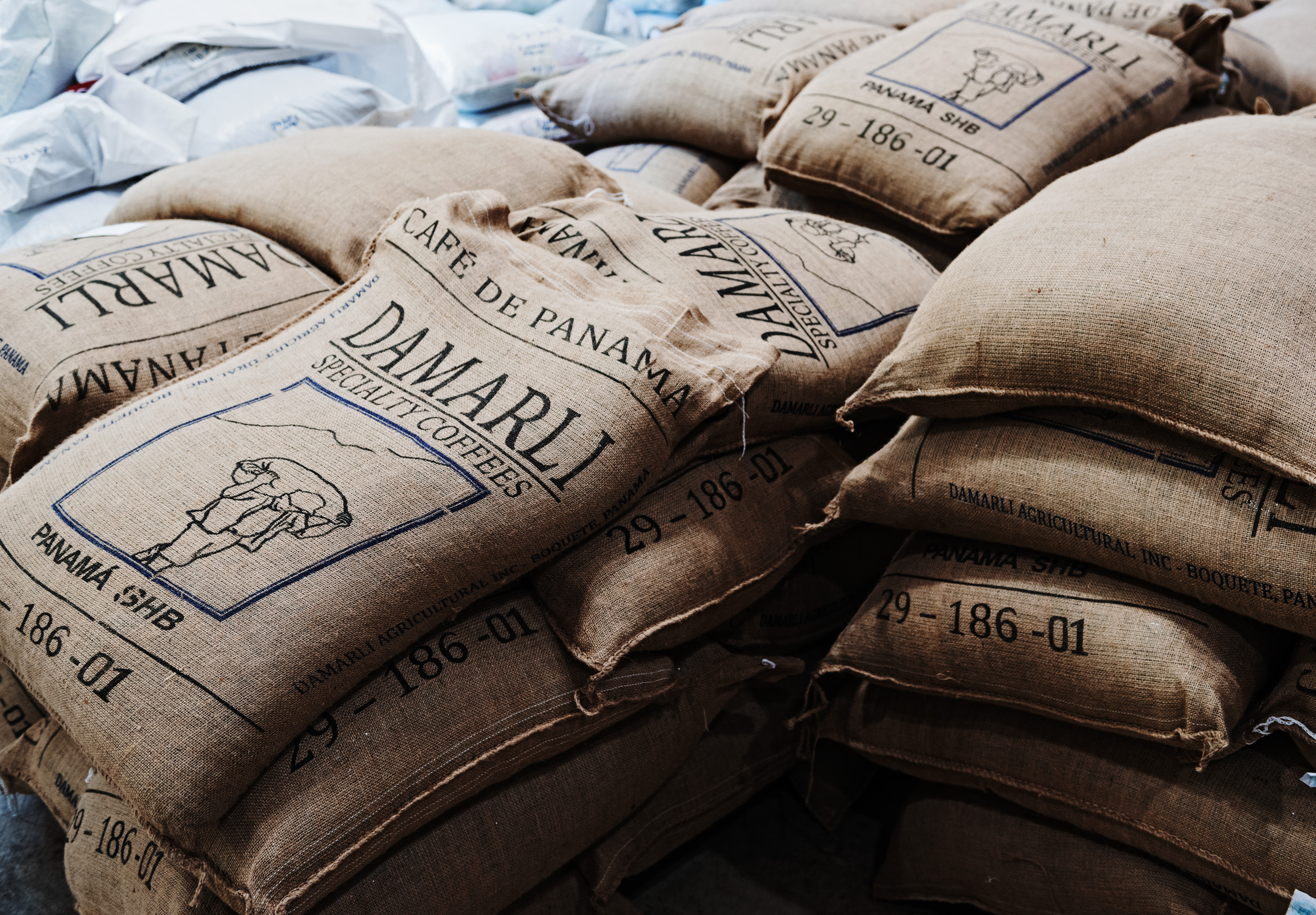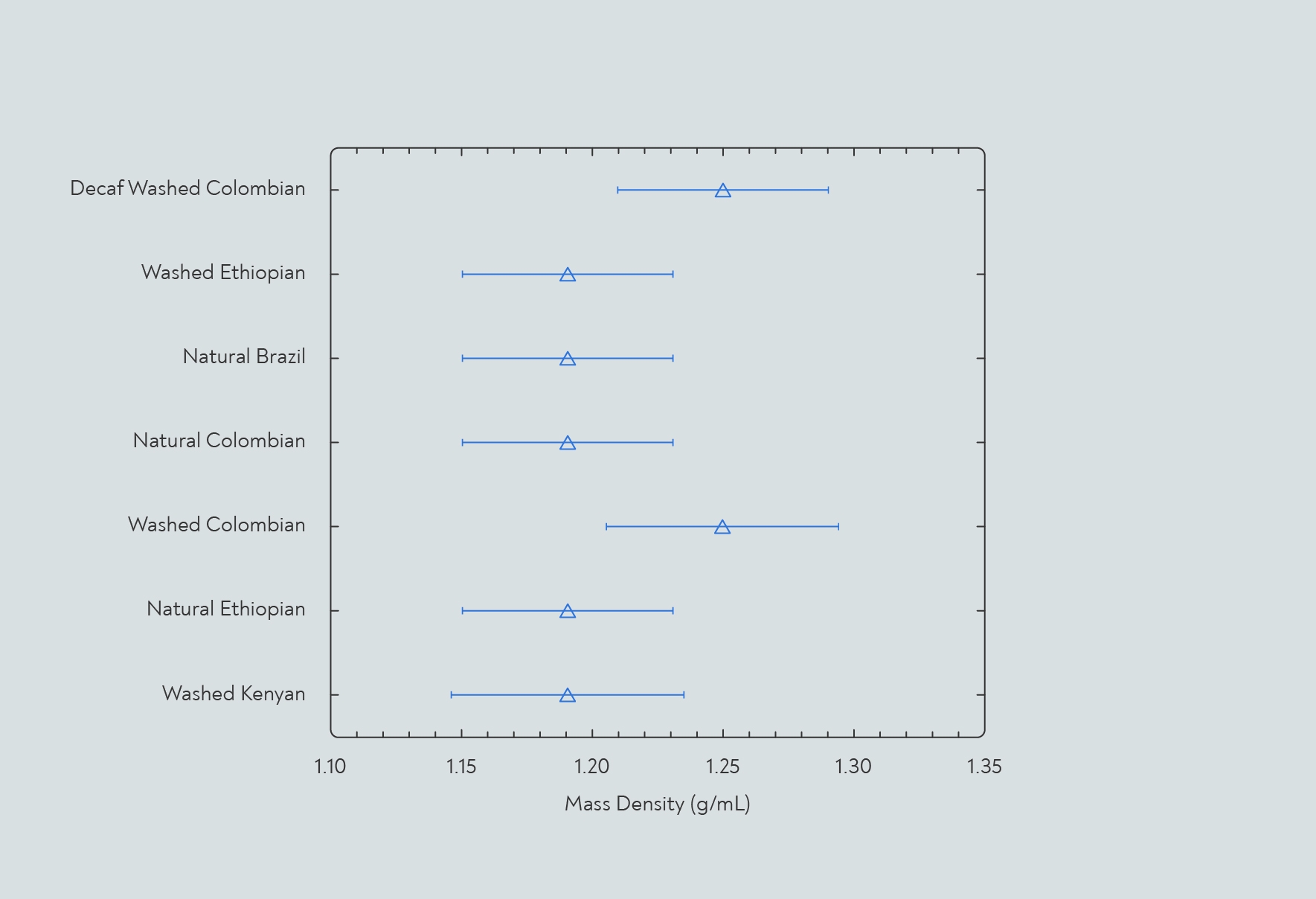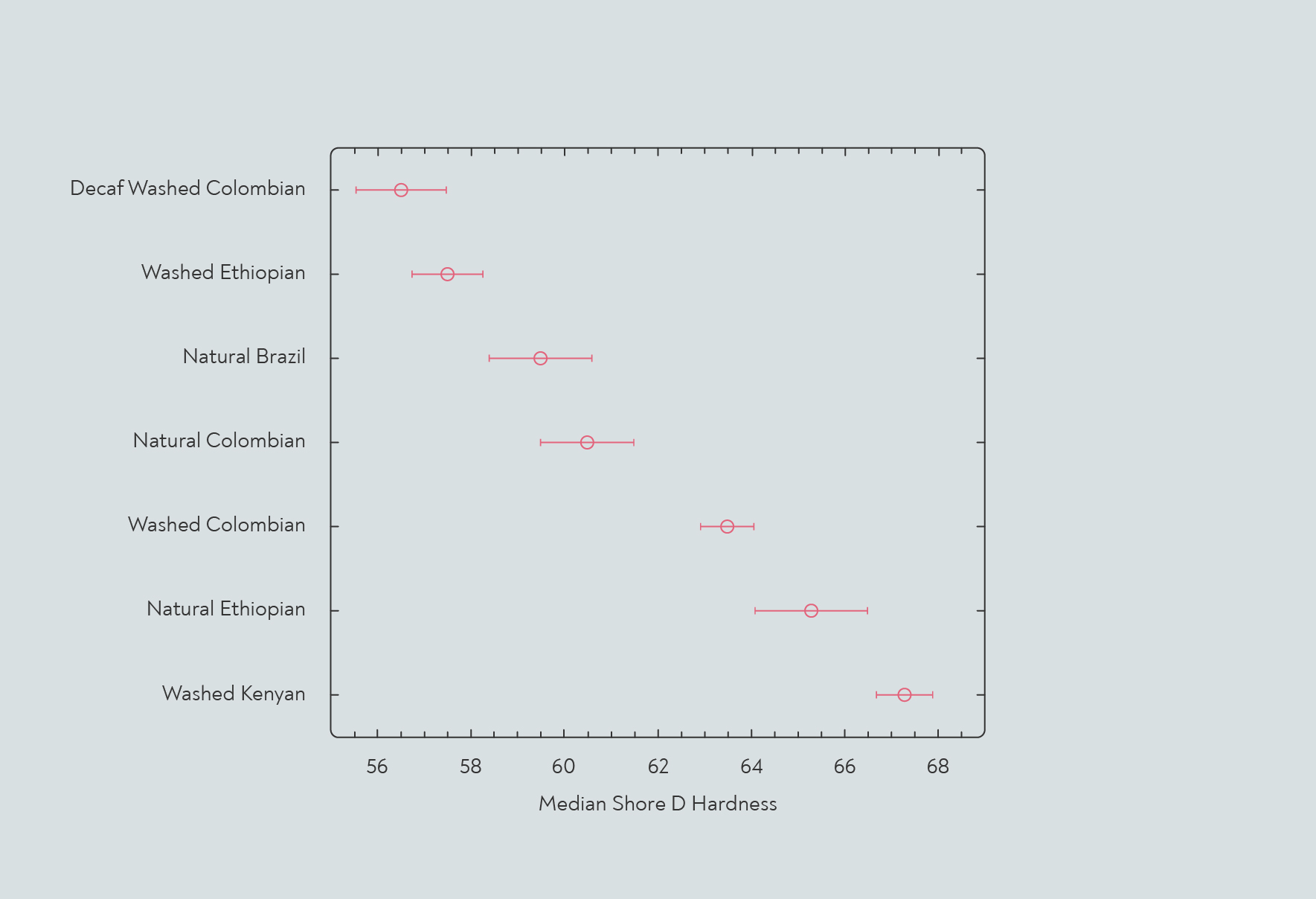Hardness is often conflated with density in roasters’ discussions about green beans. Roasters tend to assume that denser beans grown at higher elevations will also be harder. This belief is reinforced by the use of the word ‘hard’ in green coffee grades in Central American countries to refer to beans grown above a certain elevation.
 ‘SHB’ on coffee sacks stands for ‘strictly hard bean,’ but it relates to the elevation at which the beans were grown, not their hardness.
‘SHB’ on coffee sacks stands for ‘strictly hard bean,’ but it relates to the elevation at which the beans were grown, not their hardness.
Hardness might not be very closely linked to density, however. Jonathan Gagné measured the hardness and density of specialty-grade green beans from different origins and found very little variation in bean density but significant differences in hardness (Gagné 2019). He suggested that since the difference in hardness is more significant, it could be a more useful indicator for how the bean will roast than density is.
Density and hardness of green coffee beans from different origins. Data from Gagné 2019
Very little published research specifically addresses the hardness of green coffee beans, however, and virtually none explores the effects of hardness on roasting. Green bean hardness may be an important and overlooked variable in coffee roasting. The hardness could, for example, affect the amount of pressure that builds up in the bean prior to first crack, or it could affect the amount of time it takes for a roast to reach first crack.
The hardness of green coffee beans is linked to their moisture content. Coffee producers know that wetter beans are softer, and they use the hardness of the bean (as tested by biting the bean) as a rough guide to the progress of drying. Once beans become hard rather than rubbery, the moisture content is approaching 12% (Gautz et al 2008).
As moisture content continues to lower, however, the beans become increasingly soft again. In a study based on drying and then rehydrating green beans,

